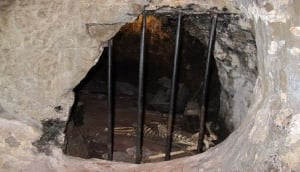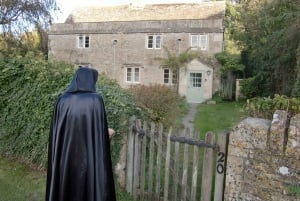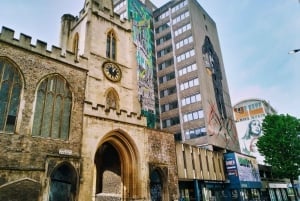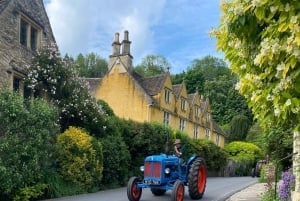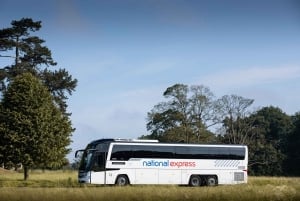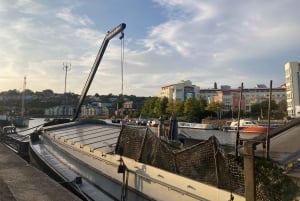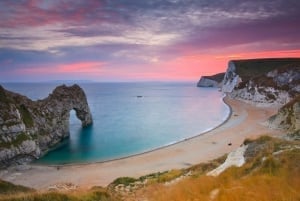Shiver Me Timbers!
The Ostrich Inn is where Blackbeard is said to have planned many a murderous deed.
Book Top Experiences and Tours in Bristol:
If youʻre booking your trip to Bristol last minute, we have you covered. Below are some of the top tours and experiences!- Harry Potter England Day Tour
- Bristol: Self-Guided Sightseeing Audio Tour
- Aerospace Bristol Entrance Ticket
- Bristol: The Best Of Bristol, Guided Bike Tour
- Bristol: Dog Life Drawing led by local Artist Cai Burton
With so many things to see and do in Bristol , not many people realise that Bristol has a rich seafaring and pirate history. Indeed, wandering around the harbour-side today with its pleasant waterside restaurants and cafes it is hard to imagine the dastardly deeds that were planned in some of the then less than savoury watering holes. To find out more I decided to join one of the weekend Pirate Walks round the harbour.
“Ahoy there!” came the cry from Captain Harry Horne. “Slap on an eye-patch and follow me to discover the haunts of the notorious Bristol pirate, Blackbeard – we may find some hidden treasure and discover some old smugglers caves along the way!”
Shouts of “Aye me Heartie!” and “Arrrr!” marked the beginning of the adventure as we set off round the harbour-side intent on discovering a bit about Bristol’s maritime history, its notorious pirates and having some fun along the way.

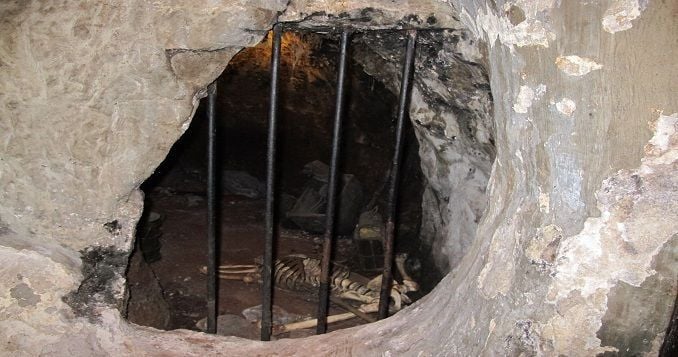
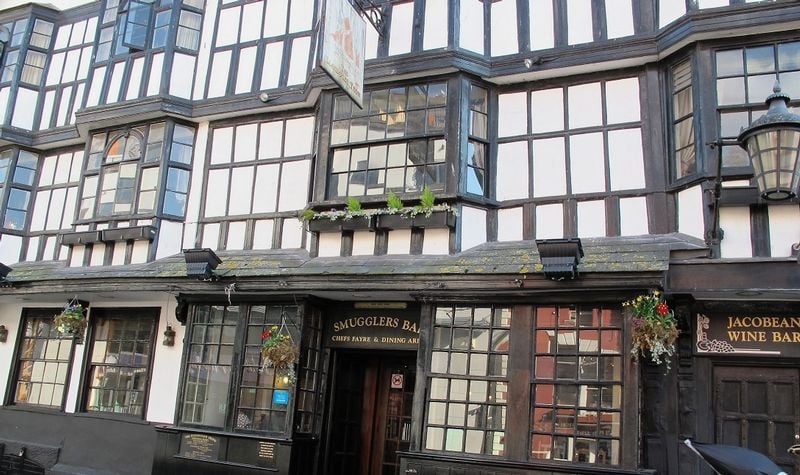
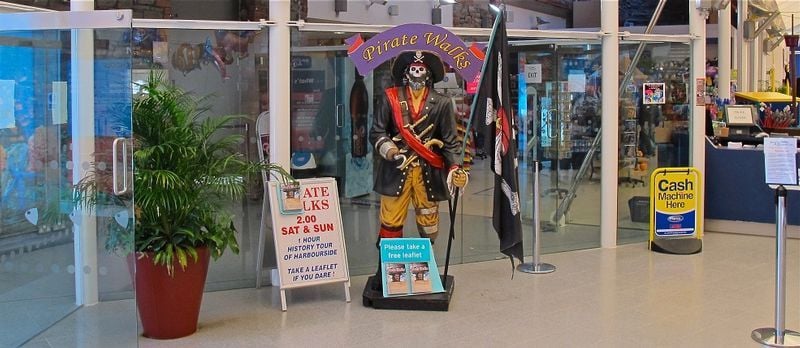
Our little band of would-be pirates followed the Skull and Crossbones pirate flag held up high by 7-year old Little Jim. We made our way towards the first stop on Pero’s Bridge. Here, after a short inspection of the two horn-like structures that conceal a mechanism for raising the bridge to allow tall ships to sail in and out of the harbour, we had our first lesson regarding Bristol’s involvement with the Slave Trade. The bridge is named Pero after a man of African origin who was brought to Bristol to work as a slave for a local wealthy merchant. Its double arch of horns are a reminder of the musical heritage that Pero and his fellow slaves brought with them and the ladders in the middle of the bridge represent the ladders on the slave ships’ riggings.
Next, guided by the flag, we moved on to John Cabot’s statue. It was at this point we realised the limits of our knowledge about Bristol’s seafaring history. Captain Harry filled in the gaps, with help from some of the children who seemed to remember more from their history lessons than we adults. We heard how Bristol’s trading with the rest of the world increased substantially after 1497 as a result of John Cabot's voyage in the Matthew to Newfoundland with ships carrying settlers as well as goods to far-flung British colonies.
Trading was hampered because Bristol Channel has the second largest tidal range in the world. On a regular basis, during "neap tides", ships could be stranded in Bristol for up to two weeks, as there was not enough water in the River Avon to allow them to sail. The opening of the floating harbour solved this problem in 1809, when a series of dams and locks was created to impound 80 acres of tidal water and allow ships to remain afloat at all times.

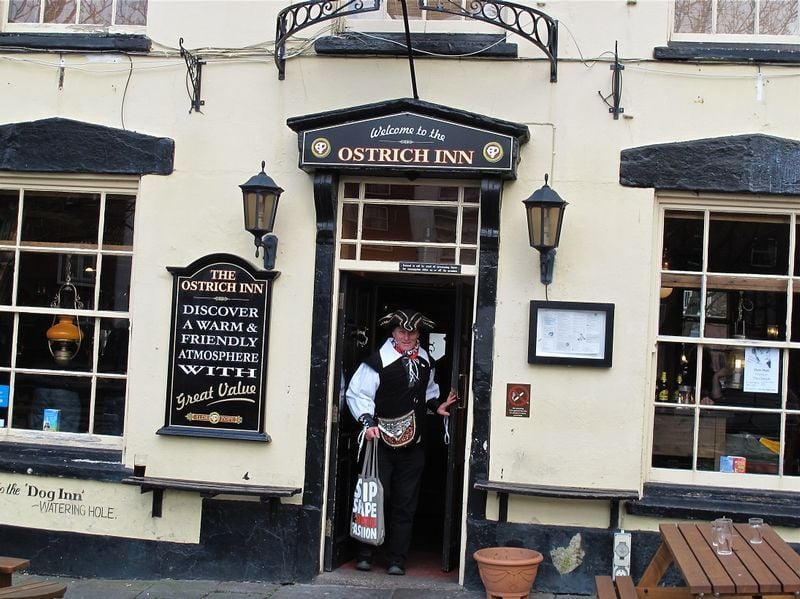


From here we moved on to the real business of the day: PIRATES. On the quayside where Blackbeard played as a boy we looked up to view his old house in Guinea Street. Captain Harry had many tales to tell about some of the unpleasant characteristics of this notorious pirate, including how Blackbeard shot one of his most trusted men in the knee, saying that if he didn't kill or injure one of his crew now and then, they would forget who was in charge.
Hearing all about Blackbeard’s sordid adventures worked up a thirst, so it was time to stop at the first watering hole of the day. The Ostrich Inn is where Blackbeard is said to have planned many a murderous deed. Here we made our first and unexpected discovery of the day - a cave, complete with skeleton, hidden away in a corner of the pub! In days gone by this cave led to a series of tunnels used by sea captains to make their way home after enjoying a swig or two of ale. By this means, with the help of a lantern boy, they were able to avoid the danger of being robbed when heading homeward on the streets by the harbour-side late at night. The children spotted several other hidden cave entrances on our way to the next stop - another historic pub!
The Hole in the Wall, formerly known as The Spyglass Inn, boasts a spy hole in the wall, used during the 18th century to look out for “press gangs”. The drinkers inside were warned of their approach by the lookout. They were then able to hide in the cellars below and so evade being forced or “pressed” to serve in the Navy. Many a man must have been grateful for this because once on board a ship the “pressed” men could not get home again and could face a lifetime at sea.

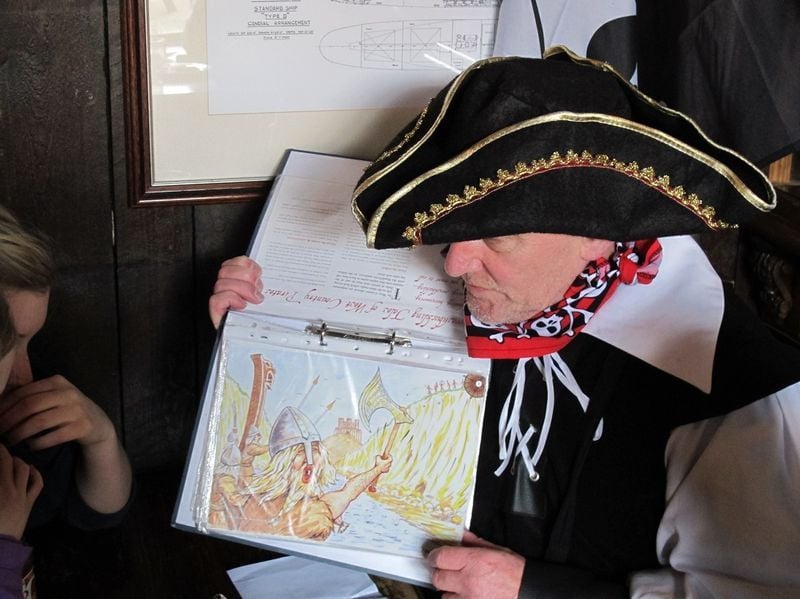

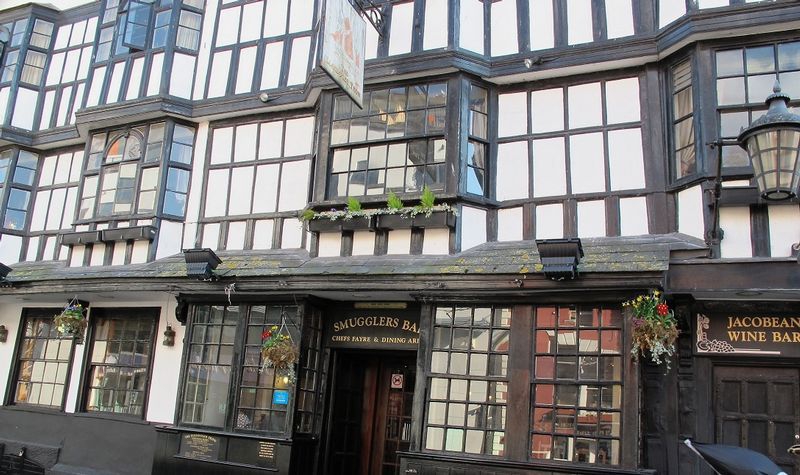
Leaving the Hole in the Wall our pirate flag led us to Queen’s Square, a gentile square now lined with desirable properties. Captain Harry told us that before 1650 the site of Queen’s Square was a marsh used for refuse tipping, weaponry practice and pirate hanging. It was also frequented by ladies of the night - stories of whom were toned down for the benefit of the younger members of our party.
Finally on to our last stop, the Llandoger Trow, an atmospheric old pub dating back to 1664. The pub was named by the first landlord who used to sail a trow, a type of flat-bottomed boat used for transporting cargo to and from Wales. The name Llandoger comes from the name of the village where the trows were built. The pub has strong literary connections with Daniel Defoe, author of Robinson Crusoe, and Robert Louis Stevenson, who wrote Treasure Island. It is said that some of the characters and places in these books were based on stories and people they met in the Llandoger Trow.
And so this fascinating tour that brings the history of seafaring Bristol and its pirates to life came to an end. Everyone in the group from young to old had a great time. I would highly recommend this tour.



